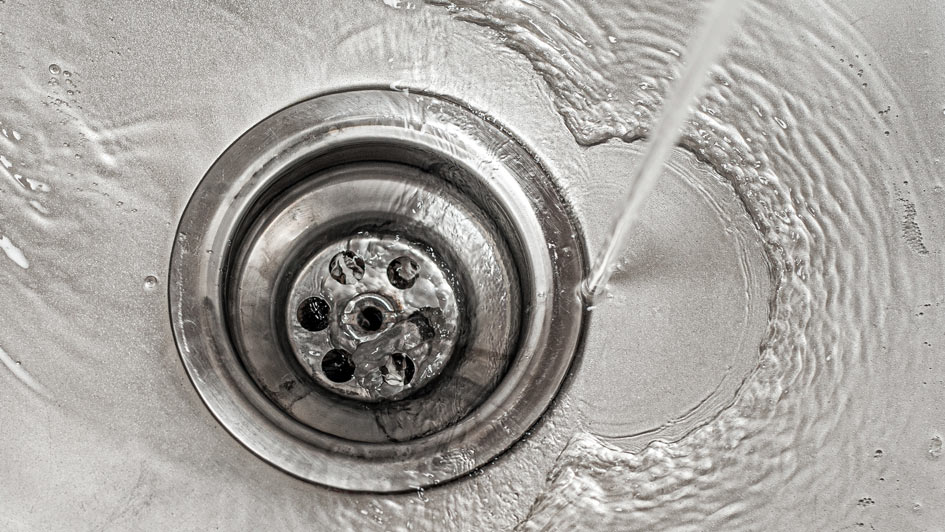
Backed-up sinks. Discolored water. Leaks. These problems may sound scary, but the truth is they’re common problems in many homes. In fact, plenty of them can be repaired with just a few painless steps.
With the right tools and information, you can save yourself time—and money—by dealing with these issues yourself. Plus, understanding how to take care of common problems will help you know when the issue is more involved and best solved by a professional.
So, don't let a clogged drain or a leaky faucet get you down—with the right info, it's easy to successfully repair straightforward plumbing problems all by yourself. We’ll take a look at a few frequent plumbing problems and how you can address them.
1. Why Won't My Sink Stop Gurgling?
If you’re noticing a gurgling sound emanating from your sink, it may be the result of of air or water trapped in the pipes. This can occur if there is a blockage in the pipes, or if a plumbing vent has become obstructed or disconnected.
Fortunately, this situation is relatively easy to correct:
- First, try using a plunger to remove any blockages that may be generating the gurgling noise.
- If a plunger does not work, you can try using a drain snake to clean out crud from the pipe. Finally, if your plumbing vent is blocked or disconnected, make sure to reconnect it and inspect it for any other blockages.
If you’re still having problems, it may be best to call a seasoned plumber in Los Angeles. They can help determine the underlying cause of the issue and provide you with lasting solutions.
2. Why Is My Sink Clogged?
If a sink isn't draining, in most cases that’s a result of something obstructing the drainpipe. However, it could also be caused by a more severe problem with your plumbing system.
Common reasons why the water in your sink won’t drain:
- Blocked or clogged pipes: As time passes, hair, food scraps, grease, animal fats and other materials can build up in the pipes, creating a blockage that prevents the water from draining.
- Broken seals: If the sink’s rubber seals are cracked or damaged, they may not be creating an effective seal around the drain to keep out air and enable the water to drain.
- Buildup in the trap: The curved pipe beneath the sink, called a P-trap, can become blocked with debris or form leaks which prevent it from draining properly.
- Blocked vent pipe: An obstruction in a vent pipe, which allows gas to leave your plumbing system, might prevent your sink from draining. Vents can be blocked by debris where they come out of your house.
To unclog a pipe, try using a plunger to force the obstruction through the line. If that doesn’t work, think about using a plumbing snake to clear away hair or other debris and allow the water to move through. Other methods are to use baking soda and vinegar or a drain-cleaning product to disintegrate the clog.
Depending on your plumbing setup, you may also look for a blockage in the P-trap, which is a bend in the pipe underneath your sink. This is done by disassembling the pipe and removing blockages from the line. To do this, first turn the faucet off and set a bucket underneath the bend. Then, disassemble the pipe and retrieve any debris. Once it’s clear, put the pipe back together and rinse with hot water.
If trying to clear the line and P-trap doesn’t work, look at where your drain vent extrudes from your house to make sure it isn’t blocked by debris such as leaves, dirt or even a nest by an overly ambitious bird or another critter. If this also doesn’t work, you may have to get a hold of an experienced professional for plumbing repair in Los Angeles to make sure there isn’t a more substantial problem with your plumbing.
3. Why Is Cloudy Water Coming from the Sink?
Most of the time, cloudy or white-looking water is caused by air bubbles in the water. This is usually benign and can often clear up on its own. It could be caused by a water company doing work on the lines, or a neighborhood construction project.
One way to check if cloudy water was made by air bubbles is to fill a glass of water and then leave it on the counter. Odds are the air bubbles will escape and the water will eventually clear. If the water is still cloudy after 24 hours, you may have another problem and will want to consult a professional for assistance.
The cloudy water also could be the result of high levels of minerals in the water in the plumbing system. Excessive minerals build up until they alter the water’s appearance and taste, in which case a water softener may help resolve the issue. It can prevent hard-water buildup from damaging your pipes and producing the distasteful cloudy water.
If cloudy water is a persistent problem, consider washing out the aerator, which is a screen at the end of your faucet. Use a water and vinegar mixture to clear away any debris or buildup. If that doesn’t work either, you probably will want to seek advice from a certified plumber and let them work toward a solution.
4. Why Won't My Sink Stop Leaking?
The reason for a leak or water drip beneath a sink is often because a plumbing fixture has broken down or malfunctioned. At times, it’s caused by a clog obstructing the line.
Here are several of the more commonly seen causes of sink leaks and how you can fix them:
- Loose Connections: One of the most frequent causes of a puddle of water underneath the sink is a result of loose connections between pipes, fixtures and hoses. If any fixture has not been correctly tightened, or if it was not sealed adequately in its fitting, water can easily escape from these weak spots.
- Worn-Out Washers: Over time, the washer in a sink fixture can become worn out and fail to create a satisfactory seal. If you see water seeping from the sides of the handle or base of the faucet, it’s possible that a new washer is needed.
- Corroded Pipes: The pipes underneath a sink can corrode over time, causing weakening and cracks. Corrosion is especially common when working with older or discounted materials, so it's important to look for any indications of degradation in order to avoid a major leak.
- Plugged Drains: A clogged drain can force water to back up and start seeping from the seal. It's crucial to look for any signs of blockage and to clear away any debris that may be inhibiting water flow.
5. Why Is My Water Rust-Colored?
The most common cause of brown tap water is rust. Rust in most cases comes from excess iron in the water, which might be the result of corroded pipes or worn-out fixtures. Rust may also show up when sediment accumulates. Buildup may form if the filtration system is faltering or there are elevated levels of minerals like manganese.
In some instances, the water can be muddied from silt or clay particles that have been stirred up from repairs on the water line or your plumbing. If you buy your water from a municipal utility company, reach out to them to let them know about the discoloration. They should be able to tell you if there has been any recent activity on the water lines.
An expert plumber in Los Angeles can help you figure out if the discoloration is originating from a rusting pipe that needs to be replaced, or if a filtration system may improve the unsightly problem.
6. Why Did My Sink's Drainage Slow Down?
The most widespread cause for a sink to drain slow is a partial blockage in the pipes. Hair and soap residue are likely reasons for a clogged bathroom sink, while food particles and grease—along with soap scum—often are at fault for kitchen sink clogs.
Three ways you can fix a clogged sink include:
- Plunger: One way to clear away a partial clog is with a plunger. If there’s no standing water in the sink, allow it to fill with enough water to cover the drain. Then, use the plunger to attempt to dislodge the clog.
- Plumbing snake/weasel: If a plunger doesn’t get the job done, you may have to use a plumbing snake—a long, thin piece of plastic—to put down your pipe to attach to the clog so you can extract it manually. Sometimes, these are referred to as plumbing weasels.
- Chemical Clog Remover: Many chemical clog removers are available to break down blockages in sink pipes. Be certain to follow all directions, and that the product won’t damage your home’s pipes or the basin in your sink.
